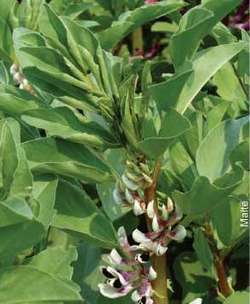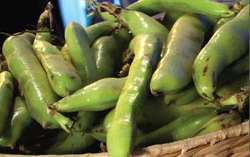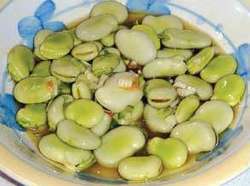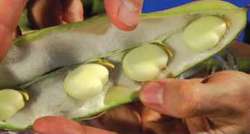broad bean
A legume member of the pea family with very large pods and beans. A very hardy plant that's easy to grow. Beans and leaves are edible. There have been times in history where all crops failed except beans, which kept the population from starvation. They have so much protein, they are called the meat of the poor. Highly nutritious and full of many essential nutrients required by the body. One of the main foods around the world for 5000 years, especially the mediterranean Greeks and Romans. Fava beans have the highest amount of L-dopa of any plant. L-dopa, a brain neurotransmitter, helps control hypertension and Parkinsons disease and stimulates the pituitary gland to produce Human Growth Hormone (HGH) -the most powerful anti aging substance known that keeps everything working smoothly in your body like when you were a teenager. HGH Improves athletic performance, strength, muscle mass. Fava beans help women with hormone issues, PMS, menopause. Since the pituitary gland controls the entire endocrine system, it also affects thyroid, sex hormones, adrenals (energy), immune system. Contains vitamin B17, known as the cancer-beating vitamin. Protects against malaria. Very high in fiber and oliosaccharides. Favas have potassium which helps maintain blood pressure and regulate the heart. Lots of vitamin A for healthy skin, good vision and bone development. Helps lower LDL- bad cholesterol. A small handful has TEN GRAMS of protein. Low fat content helps bodybuilders stay lean while gaining muscle. Want natural growth hormones? Eat Fava beans! Start easy to test one or two because a few unhealthy people might have a bad allergic reaction known as favism. I have a raw food fava bean recipe in my book Heal Yourself 101 that I eat all the time.
Edible Plant Guide © 2012 Markus Rothkranz




